What can brands and marketeers learn from Amazon reviews?

Amazon dominates the UK’s ecommerce market, showing no signs of slowing down any time soon. While its influence on sales cannot be ignored by brands, marketeers should pay attention too.
With an impressive online catalogue of products, consumers will largely rely on price matching and reviews to inform their purchase decision. Reviews that Amazon have aplenty. However, review data also holds huge business and market research value.
Analyzing review data enables businesses to recognize customer pain points, conduct thorough competitor analysis, and understand how audience sentiment has changed over time. However, it can be time-consuming for one-time value customer insights. But here’s where Relative Insight’s ability to quickly manipulate and analyze your qualitative data comes in.
Three types of comparison
Take Amazon’s best-selling electronic: Echo Dot 3rd Generation. We gathered all Amazon reviews of this product, spanning from 1st January 2019 to 31st December 2020. After uploading this data to Relative Insight, we used the split functionality to create two comparisons:
- Split by date: 2019 vs 2020
- Split by sentiment: positive reviews vs negative reviews
But our research didn’t stop there. Taking reviews of similar products – Bose Home Speaker 500 and Sonos One – we used Relative Insight as a sophisticated means of competitor benchmarking and brand comparison. Here’s what we found.
Time analysis: 2019 vs 2020
2019
Comparisons over time can help brands and marketeers understand how an audience’s opinions of a product or service have changed, and chart whether there has been a shift in public mood. For instance, in 2019 people felt the Echo Dot 3rd Gen was falsely advertised, with one customer claiming it’s not as easy as it looks. 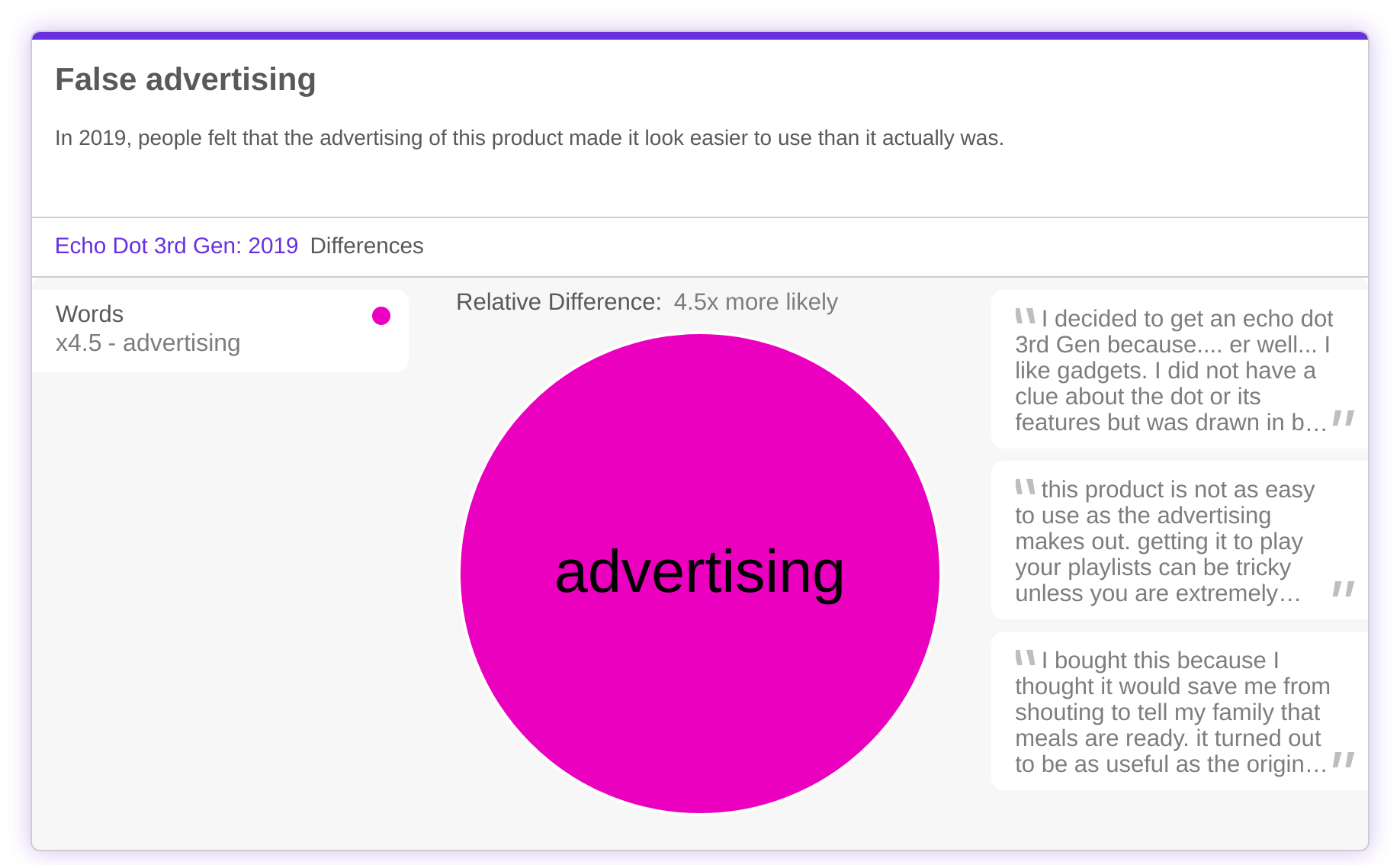

2020
A global pandemic later, and advertising was no longer at the forefront of people’s minds. The smart speaker became referred to as a companion in lockdown. As a result of circumstance, consumers in 2020 had a much more positive reception of the Echo Dot and were 6.3x more likely to claim it made life easier.




Sentiment analysis
Understanding what makes a customer tick in a specific product category is a massive part of product development. But on the other hand, brands should review their own criticism to address customer pain points and inform marketing strategy. Using language comparison for sentiment analysis can pinpoint the linguistic differences between positive and negative reviews.
Positive reviews
It seems that great value and being fun for the family are the two main reasons customers rated the Echo Dot 4 stars or above. What’s interesting is that words such as kids, we and us are 4.2x more likely to appear in positive reviews. Amazon specifically targets families in their marketing, therefore these words show an alignment between brand messaging and buyer.
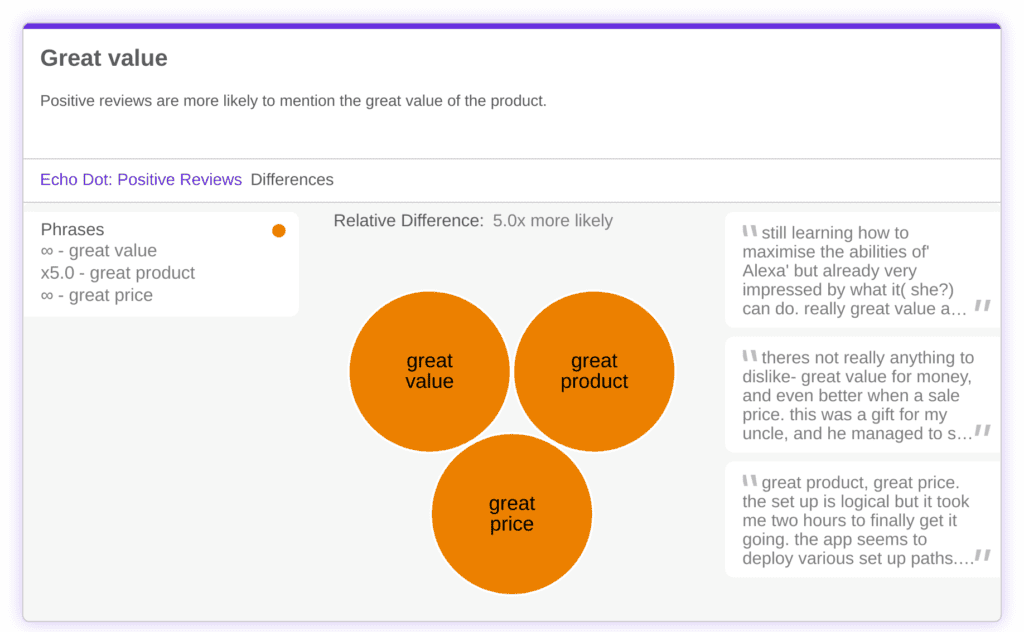



Additionally, positive reviews were more likely to include phrases such as highly recommend and another one, showing that a positive user experience directly correlates to increased sales, product loyalty and recommendations.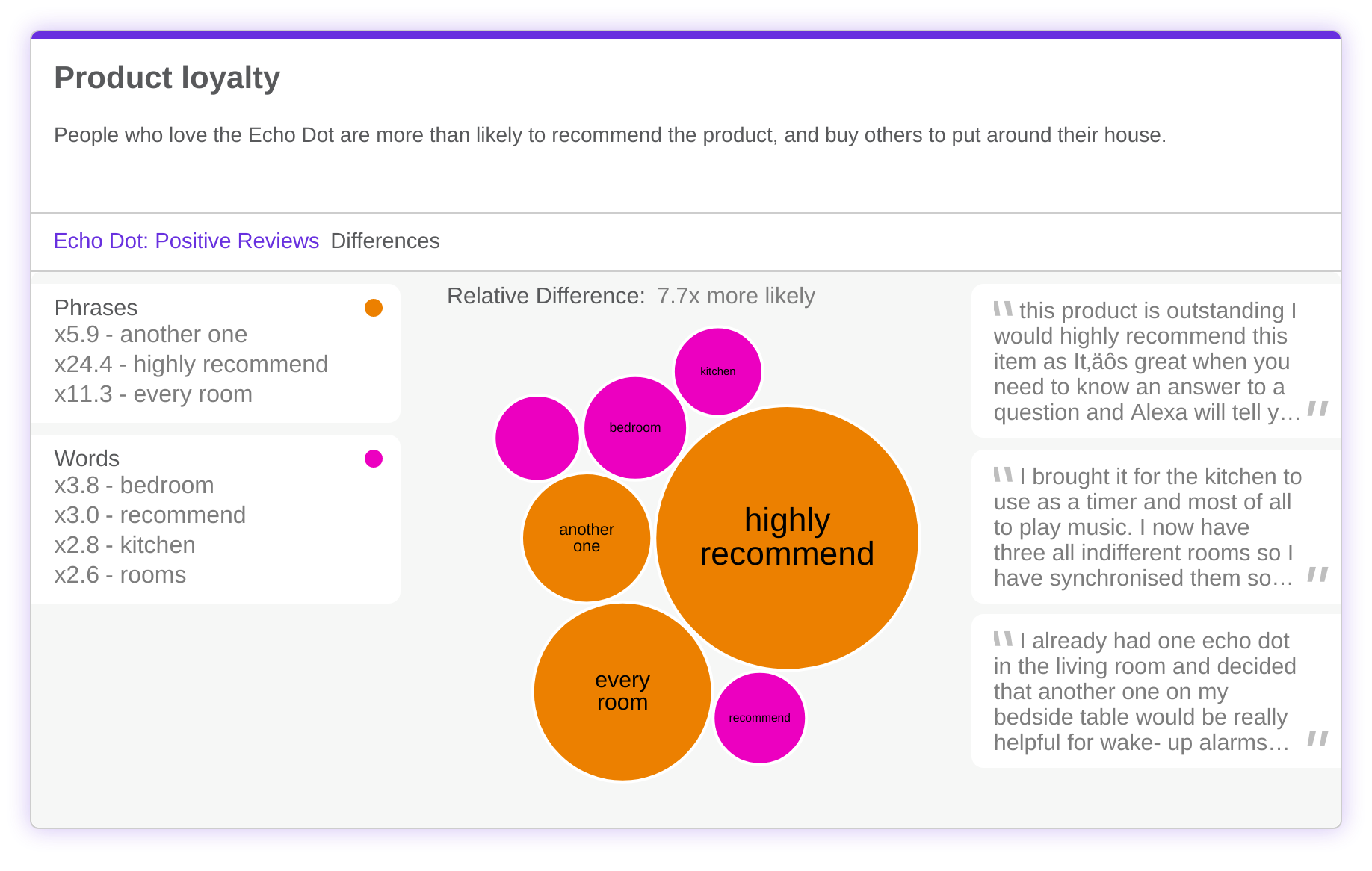

Negative reviews
In comparison, negative reviews of the Echo Dot pointed out technical limitations of the product, particularly its AI function: Alexa. Customers were 4.1x more likely to mention Alexa’s difficulty understanding and poor recognition of requests. This seems to be a result of the product’s limited integration with services such as Spotify and the BBC.
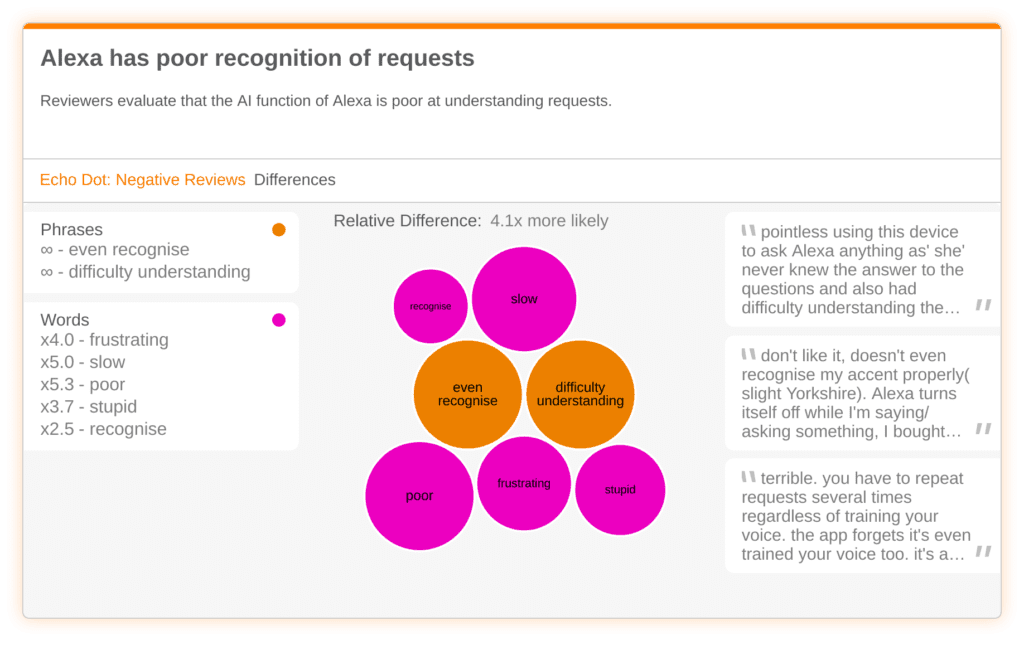

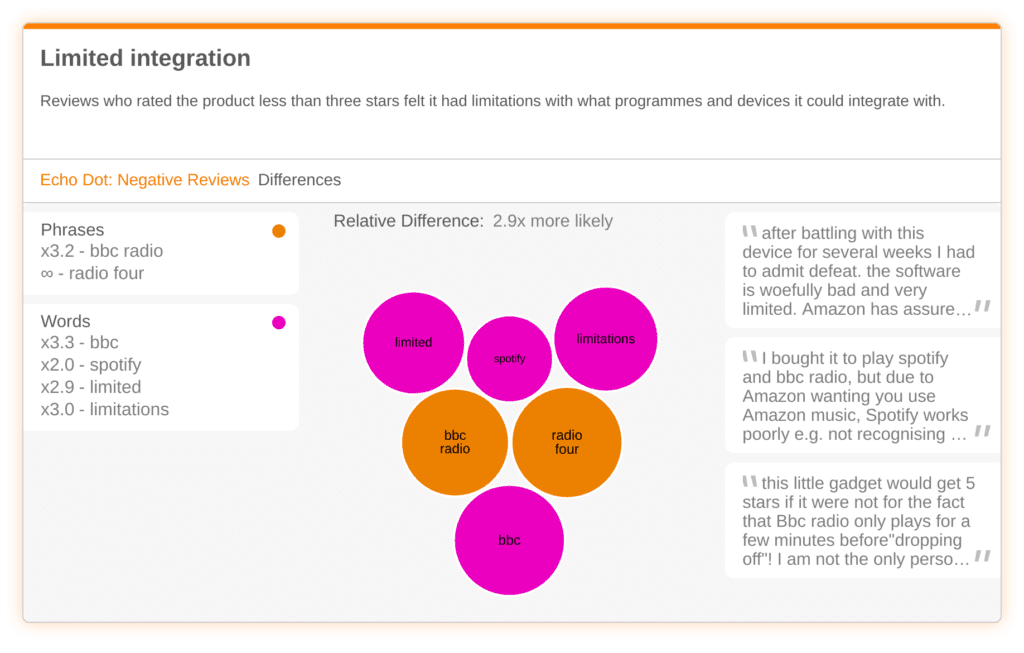

Furthermore, it seems that negative reviews extend beyond the product, with customers 12.3x more likely to mention poor slow customer service from Amazon. On the whole, Amazon should aim to streamline their support process to help reduce negative reviews.

Brand comparison: Bose, Sonos and Amazon
More insights to discover? Yes… and then some! Relative’s language comparison methodology can also help brands and agencies better understand the competitive landscape. Namely, how products stack up in comparison.
For this example, we compared reviews of Sonos One and Bose Home Speaker 500 to Amazon’s Echo Dot. This helped us to answer a couple of questions: What are the unique selling points of each competitor? What differentiates each product from one another?
Bose 500 – Worth the price tag
Words such as rich, crisp and smooth were used in descriptions of the product, with one customer claiming the Bose 500 is “the Rolls Royce of speakers”. Customers were happy to pay the high price, showing that the key USP for Bose is the premium sound quality, which customers were 16.8x more likely to comment on.
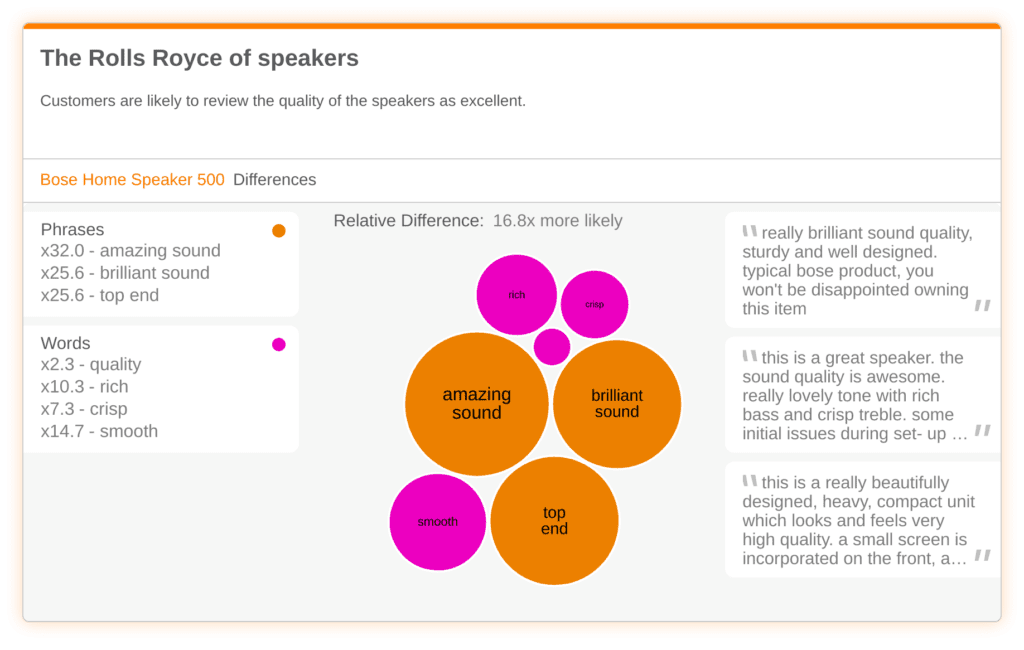

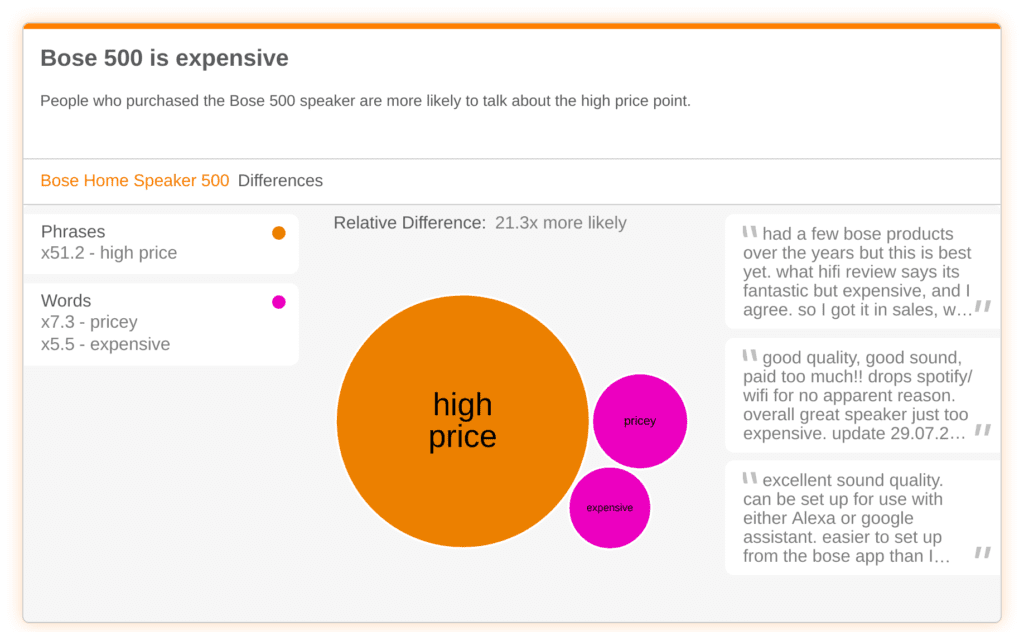

Sonos One – The ultimate surround sound
When compared with the Echo Dot, reviewers of Sonos One were 3.1x more likely to discuss the straightforward setup and easy use of the app. Competitors in the smart speaker space could look to improve these areas to ensure they are offering a similar user experience to Sonos. However, the real USP of Sonos One? Customers claimed it was the ultimate room-filling, surround sound system.
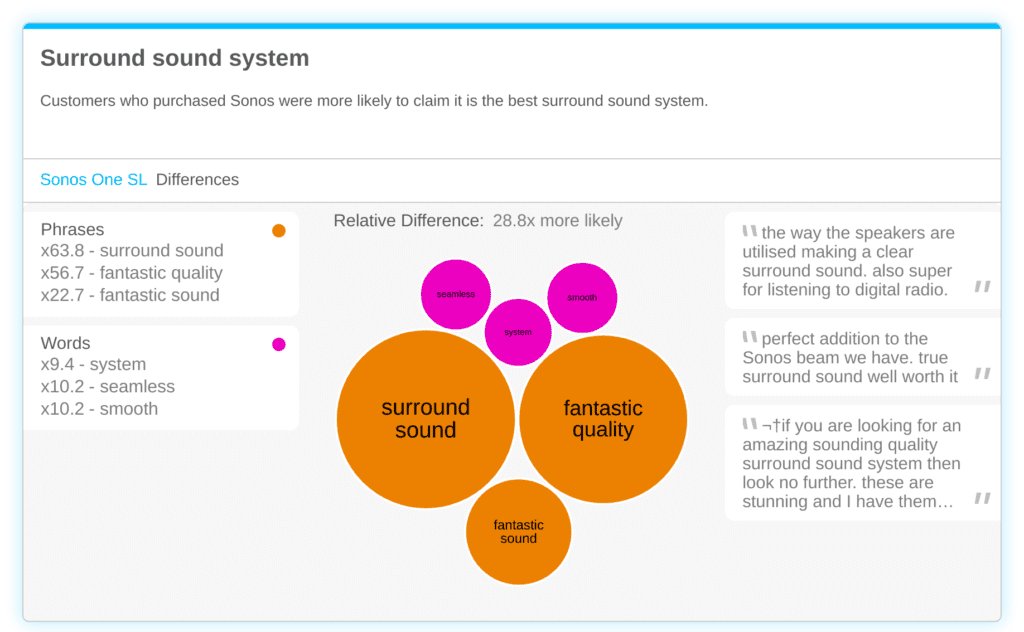



Language comparison supports a cost-efficient and resourceful approach to market research, helping you quickly analyze qualitative data including customer reviews. Metadata such as star ratings and time stamps can help brands and agencies narrow in on specific audience segments and better understand their customers.
Curious to learn more? Take a look at our customer insights examples for businesses or book a no-commitment discovery call with one of our experts.
